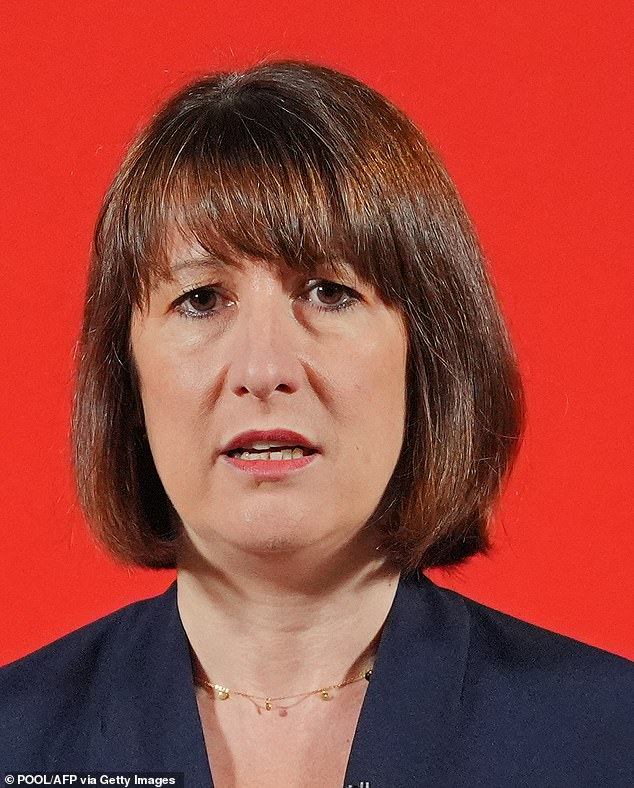Chancellor Rachel Reeves may not be the UK’s most popular person later this week, but to her credit she has always been vocal about what she believes this country needs.
During her time in opposition she penned countless columns criticising the Government and pushing her own agenda. To get a flavour of what could be coming in her first Budget, Wealth & Personal Finance has trawled through these articles to dig out policies she has fiercely called for – and those she has openly despised.

Chancellor Rachel Reeves
Home inheritance allowance could go
It is no secret that Ms Reeves believes inheritance taxes are too generous, and she is widely expected to announce a tightening of death duties.
Writing for The Guardian in 2017, she took aim at the former Chancellor George Osborne’s plan to lift the inheritance tax allowance from £325,000 to £500,000 per person to allow a £1 million family home to be passed on tax-free. She called it ‘iniquitous’ and ‘ill-conceived’, as well as labelling it a ‘tax break for the wealthy elite’.
So the current allowance for passing on property could well be on the chopping block.
Andrew Marr, managing partner of tax specialist Forbes Dawson, suspects this allowance is ‘an obvious one to go’, given that most people sell houses they inherit instead of living in them.
You can currently pass on up to £325,000 after death free of inheritance tax – and couples who are married or in civil partnerships can pass on £650,000. Everything over this allowance is taxed at a flat rate of 40 per cent. Those leaving a property to a direct descendant get an extra allowance of £175,000 each, known as the residence nil-rate band, meaning £500,000 is tax-free.
So a couple who are married or in a civil partnership can pass on a family home up to the value of £1million free of inheritance tax. If the property allowance is scrapped on Wednesday, their loved ones would face a tax bill of £140,000.
Your ISA could be capped
The tax-friendly individual savings account (Isa) could come under fire if Ms Reeves acts on her vision of a lifetime limit on the tax-free accounts.
In an article for The Independent eight years ago, she called for a £500,000 limit on the amount that savers could put into Isas.
Savers and investors can pay up to £20,000 into Isas every tax year, where it grows free of tax on interest, capital gains or dividends. This annual allowance can be split between different Isa types, which include cash Isas as well as stocks and shares Isas.
But any changes could disincentivise investors and cause uproar among the 40,000 people who currently have more than £500,000 in Isas.
That £500,000 cap would be breached if an investor put just half of the current annual allowance into an Isa every year for 25 years, assuming it grows by just 5 per cent a year, according to calculations by Hargreaves Lansdown.
There are also fears the Chancellor could restrict the annual allowance.
When Ms Reeves wrote about Isas in January 2016, the limit was £15,000 a year, which she suggested should remain.
Using landlord tax to fund social care
Social care funding was in the spotlight this summer when the Chancellor scrapped plans for an £86,000 cap on what anyone should pay during their lifetime for personal care. But she could be planning to fund it instead by levying a new charge on landlords and investors, if a previous article she penned for The Mirror is acted on.
The 2021 article criticised the Conservatives’ ‘unfair’ job tax – an initial 1.25 percentage point hike to National Insurance contributions to fund social care. Instead, she said, there were other ways to raise this money, including taxing the incomes of landlords and ‘those who buy and sell large quantities of financial assets, stocks and shares’.
It is unclear if Ms Reeves was suggesting the funding should be raised through a direct tax hike on landlords or an increase in capital gains tax rates. Experts warn that an increase in capital gains tax is one of the most likely changes in the pipeline this week.
Pension tax relief cut for high earners
Ms Reeves has long called for a flat rate on the tax relief paid into pensions – currently workers receive tax relief at their rate of income tax.
The Chancellor was said to be seriously considering an overhaul of the system but was forced to scrap it after being warned it would impact up to a million teachers, nurses and other public sector workers.
In a piece for The Times in 2016, she wrote that then-Chancellor Osborne should set a flat rate of pension tax relief.
‘It would be simpler, fairer and an important step towards boosting retirement savings. Figures of between 20 and 33 per cent for this rate have been floated. I believe it should be 33 per cent,’ she said.
Charlene Young, pensions expert at investment platform AJ Bell, explains that if a 33 per cent rate were introduced for all, savers who get tax relief at the basic rate of 20 per cent would receive a boost. However, it would heap an extra hit on higher earners, who would lose significant chunks of their tax relief.
Pensions tax relief could be under an even bigger threat if the Chancellor goes further and follows her previous calls to replace it altogether.
Writing for The Independent in 2016, Ms Reeves called for a ‘simple savings bonus’ where for every £1 you ‘put in’ you get 25p or 30p from the public purse. She said if you saved £1,000 a year, you could get £250 or £300 on top. This would come with annual and lifetime limits on what you could save.
Although a spokesman for Ms Reeves said Labour had ‘no plans’ to change pension tax relief during the election campaign, they refused to rule out any future changes.
Some links in this article may be affiliate links. If you click on them we may earn a small commission. That helps us fund This Is Money, and keep it free to use. We do not write articles to promote products. We do not allow any commercial relationship to affect our editorial independence.
Source link






